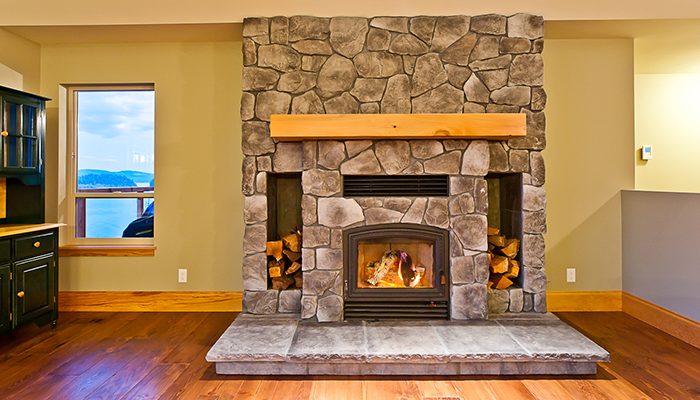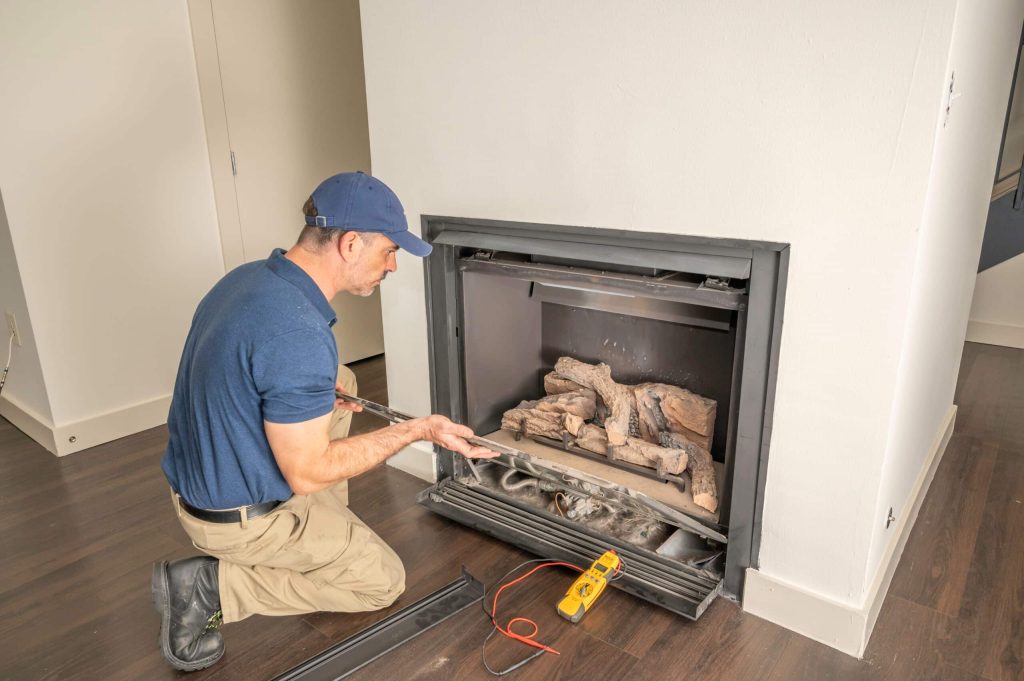
Adding a gas fireplace to an existing home is a great way to improve the comfort, warmth, and atmosphere of your home. With the right tools, a little bit of knowledge, and some DIY experience, you can easily install a gas fireplace in your home. To begin the process, you will need to determine the best location for your fireplace, as well as the type of gas fireplace you want to install. Once you have made these decisions, you will need to prepare the area, install the gas hookups, and install the fireplace itself. With the right materials and a bit of patience, you can easily add a gas fireplace to your existing home.
Identifying the Type of Gas Fireplace
Gas fireplaces come in a wide variety of styles and sizes, making it difficult to identify the type of gas fireplace you have. To start, you’ll need to determine if your fireplace uses natural gas or propane. If you don’t know what type of gas your fireplace uses, you can try to locate the gas line that connects to the fireplace. If it’s a natural gas line, it will likely be yellow. If it’s propane, it will likely be black. Additionally, if you have the model number on the fireplace, you can look it up online to find out more about the type of gas fireplace you have. Once you’ve determined the type of gas your fireplace uses, you’ll need to decide what type of gas fireplace you would like to install, such as a direct vent, vent-free, or b-vent fireplace. Knowing the type of fireplace you have and what type of gas it uses will make it easier to select the right model and installation method.
Preparing the Space for Installation
Preparing the space for installation is key to ensuring a successful and efficient installation process. This may include designing a layout plan, measuring the space, gathering the necessary tools and materials, and making sure the area is free of any obstructions. Proper preparation also includes ensuring that the area is well-lit, free of dust and debris, and that all necessary safety precautions are in place. By taking the time to prepare the space properly, you can ensure that the installation process goes smoothly and that the finished product looks its best.
Selecting the Venting System
Choosing the right venting system can be crucial in ensuring the safety of your home and its occupants. It is important to select a venting system that is appropriate for the size of your home and the type of fuel being used. It should also be designed to provide adequate airflow for the fuel type, with proper seals and insulation to protect against leaks and drafts. Additionally, the venting system should be properly installed and maintained to ensure safety and efficiency. By taking the time to research and select the right venting system, you can be sure that your home is safe and secure.
Installing the Gas Fireplace
Installing your own gas fireplace is an easy and cost-effective way to add warmth, beauty, and ambiance to your home. With a few simple steps, you can have a gas fireplace that is up and running in no time. First, you will need to determine the size of the gas fireplace that you need and the location of the installation. Next, you will need to ensure that the gas line is properly installed and that the gas is turned on. After that, you will need to connect the gas line to the fireplace and test it to make sure that it is working properly. Finally, you will need to install the fireplace surround and any other finishing touches, such as mantels or hearths. With these simple steps, you are well on your way to having a beautiful, working gas fireplace in your home.

Finishing the Fireplace
Fireplaces can be a beautiful addition to any home, but they have to be finished and maintained properly to ensure longevity and safety. Finishing a fireplace can be a challenging task, but with the right tools and guidance, it can be done with ease. The first step is to ensure that you have the correct materials for the job. This includes mortar, bricks, stone, and other materials that will be used to build the fireplace. Once you have the materials, you must properly prepare the area where the fireplace will be built. This includes removing any existing materials, such as drywall, and filling any gaps or cracks with mortar. Once the area is ready, the next step is to lay the bricks and stone in the desired pattern. Finally, the mortar must be applied and the fireplace can be finished. With careful attention to detail and the right materials, a beautiful fireplace can be created.
Maintaining the Fireplace
Maintaining a fireplace is essential for safe, efficient burning and a beautiful fire. Regular cleaning is essential to remove creosote buildup and prevent smoke from entering your home. It is also important to inspect the chimney and flue and to keep your fireplace and chimney clean of debris so that there is no risk of a chimney fire. Additionally, you should use a fireplace screen to contain sparks and embers, and make sure that your fireplace is the proper size for your home. With a little bit of upkeep, you can keep your fireplace burning safely and efficiently.
1. What type of ventilation do I need for my gas fireplace?
A gas fireplace requires adequate ventilation to ensure that all combustion by-products are safely removed from your home. This may include a chimney, flue or other exhaust system.
2. Does my gas fireplace need to be connected to a gas line?
Yes, all gas fireplaces need to be connected to a gas line in order to safely operate. Depending on the type of gas fireplace you choose, you may need a professional to install the gas line.
3. What type of permits or approvals do I need to install a gas fireplace?
Depending on your local municipality, you may need to obtain a permit to install a gas fireplace in your home. It is also important to ensure that your gas fireplace is installed according to the manufacturer’s instructions and any local building codes.
Conclusion
Adding a gas fireplace to an existing home can be a great way to add value and ambiance to your home. With proper planning and installation, it can be a relatively simple and cost-effective project. It is important to ensure that all safety measures are taken, such as having the gas line inspected and tested, making sure that the gas fireplace is properly vented, and hiring a qualified professional to install and service the fireplace. With the right research, planning, and installation, adding a gas fireplace to your home can be a rewarding and enjoyable experience.
Leave a Reply